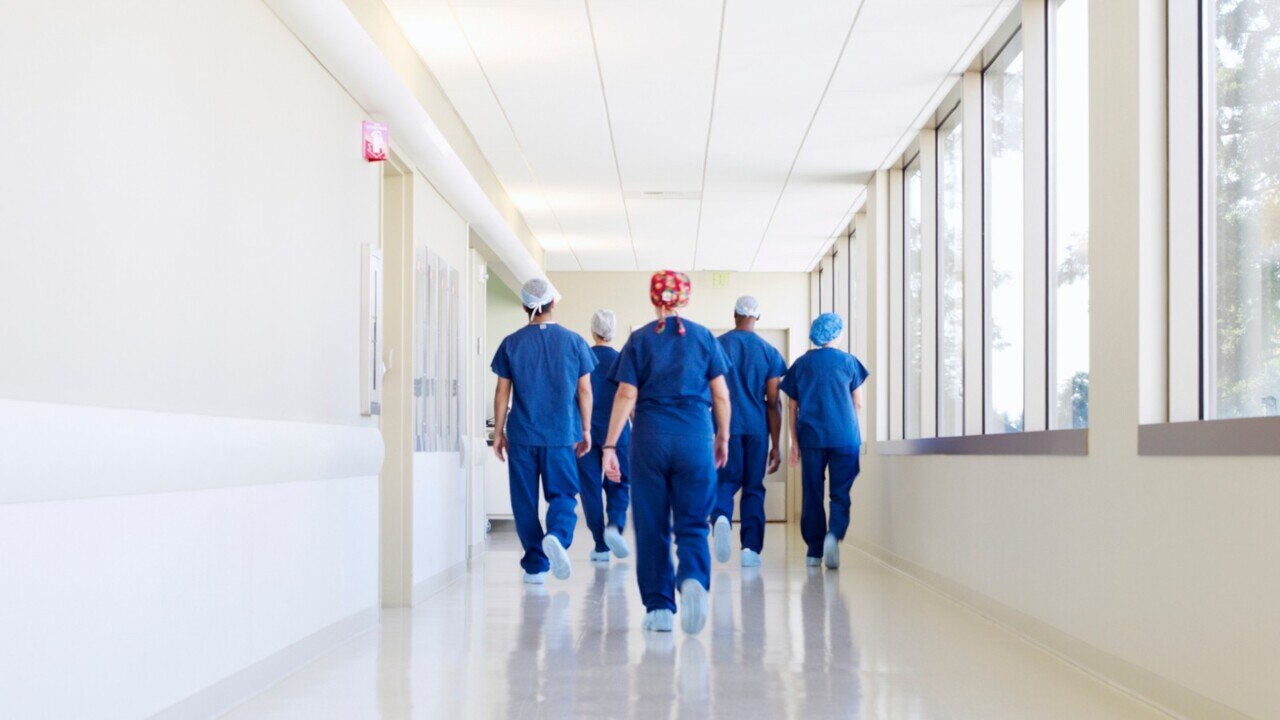Reassuring signs Vic Omicron wave has peaked
The downward trend in Covid hospital admissions suggests infections linked to the highly contagious Omicron strain have peaked.

Opinion
Don't miss out on the headlines from Opinion. Followed categories will be added to My News.
We are very focused on Omicron now as it sweeps the world, but when monitoring the current coronavirus wave in Australia we need to remember we still have at least two variants circulating.
Delta and Omicron have different transmission potential and severity, and different coverage by our vaccines. As a highly infectious immune-escape variant, Omicron can infect a wider range of people as prior infection or the first two doses of vaccine do not offer the same protection from infection as with other variants, even though they still protect from serious illness.
Before Omicron arrived in Victoria at the end of 2021, we were averaging more than 1000 new case reports a day of Delta following the easing of restrictions in late October. In fact, our hospital admissions for Covid had been rising and were up 40 per cent over the month of December, with double the number of ICU admissions and patients on ventilators.
One hundred per cent of Covid patients in Victorian ICUs by the end of December were unvaccinated, or only partially vaccinated, and more than half the active cases in ICU were on ventilators, which is consistent with these being predominantly Delta infections.
Our true Delta infection rate had therefore been rising after restrictions eased, but fewer cases were being detected, with casual exposure sites no longer notified and fewer prompts to get tested.

The number of cases reported has also been heavily influenced by the many shifts in testing requirements, access and advice. The switch to a greater reliance on rapid antigen tests (for low-risk community infections, as well as workplace screening, and the recent introduction of positive RAT reporting, have also affected the PCR case counts. This means we can’t directly compare today’s PCR results to a week ago, let alone last month.
PCR test results are also still often delayed by up to a week, and today’s RAT test reports are still a combination of yesterday’s tests, as well as those from preceding days, making the picture messier still.
Hospital reports are theoretically more reliable than voluntary testing and self-reporting, for if you are unwell enough to be admitted to hospital, you will be automatically tested and counted as a case. But even this is more complicated now as they no longer just represent the most serious cases, which we have been using as an indicator of underlying community rates, and as a measure of excess hospital admissions and ICU demand.
People testing positive in hospital now aren’t all admitted for their Covid infection itself, and many may not even know they are infected until they are tested on arrival. These “incidental infections” reflect our high community infection rate and, while they still pose added strain on hospitals with added exposure risks to staff and patients, they now obscure the true count of serious Covid infections.
We still want to know what’s happening with new infections in the community today to predict what the impact on hospitals might be in a week or so as people usually don’t develop serious illness until a week or more into their infection. On top of that, understanding the current incidence of infection will help predict the percentage of hospital admissions that may incidentally have Covid as well.
So what can we glean from RAT and PCR test results? We are now 12 days into the reporting of positive RAT results in Victoria and are seeing a steady pattern of case reports comparable to the daily PCR positive counts.
The first days of reporting included all positive results from the previous week, so there was catch-up reporting that should only be included if using weekly averages. Also, NSW Health warns that positive tests may be reported more than once with duplicates not yet removed, and the same is likely for all states. But if we assume any rate of duplication is reasonably consistent, we can still at least look at trends and overall the counts have settled to a consistent number just over 10000 a day since Sunday.
In contrast, PCR test results are still delayed and therefore are probably more temporally in synch with hospitalisation numbers themselves – most people wait a day or two after symptoms develop to test and so are probably four or more days into their infection.
By the time their test result comes through after another five or so days, most infections are into their second week and already admitted if hospital care is needed. Therefore, the stabilising we are seeing in combined PCR and RAT results for new infections that started a week or more ago means this should translate to reduced Covid admissions very soon, if not already.
While total infections in the community remain high, any drop in new admissions for Covid infection will be obscured by high numbers of incidental infections. The fact we have the start of a downward trend in overall Covid hospital admissions appearing this week is therefore very encouraging, and consistent with infections having peaked already as is also becoming visible in test results.
Even as new admissions drop, it will take time for existing patients to clear infections and be discharged. Meanwhile, high community infection rates continue to affect our hospitals and all workplaces as absenteeism continues to take a toll.
Unlike the Delta wave, where we needed to get a lengthy two-dose primary course of vaccine rolled out to make a difference to infection risk, with Omicron a single booster dose for the 93 per cent of Victorians 12 and over who have had two doses already will lead to a better than 60 per cent reduced risk of symptomatic infection within two weeks. Twenty six per cent have now had their booster, and this will help slow community transmission.
It will only be when the Omicron dust settles that we will have a clear picture of the Delta outbreak, and whether that has also been contained. The experience with mRNA boosters in the UK tells us protection from Delta infection rises back up to over 95 per cent no matter what vaccine was used for the primary course. So even if Delta survives Omicron, it is very unlikely to survive in a 95 per cent boosted population.
Catherine Bennett is chair in epidemiology at Deakin University




